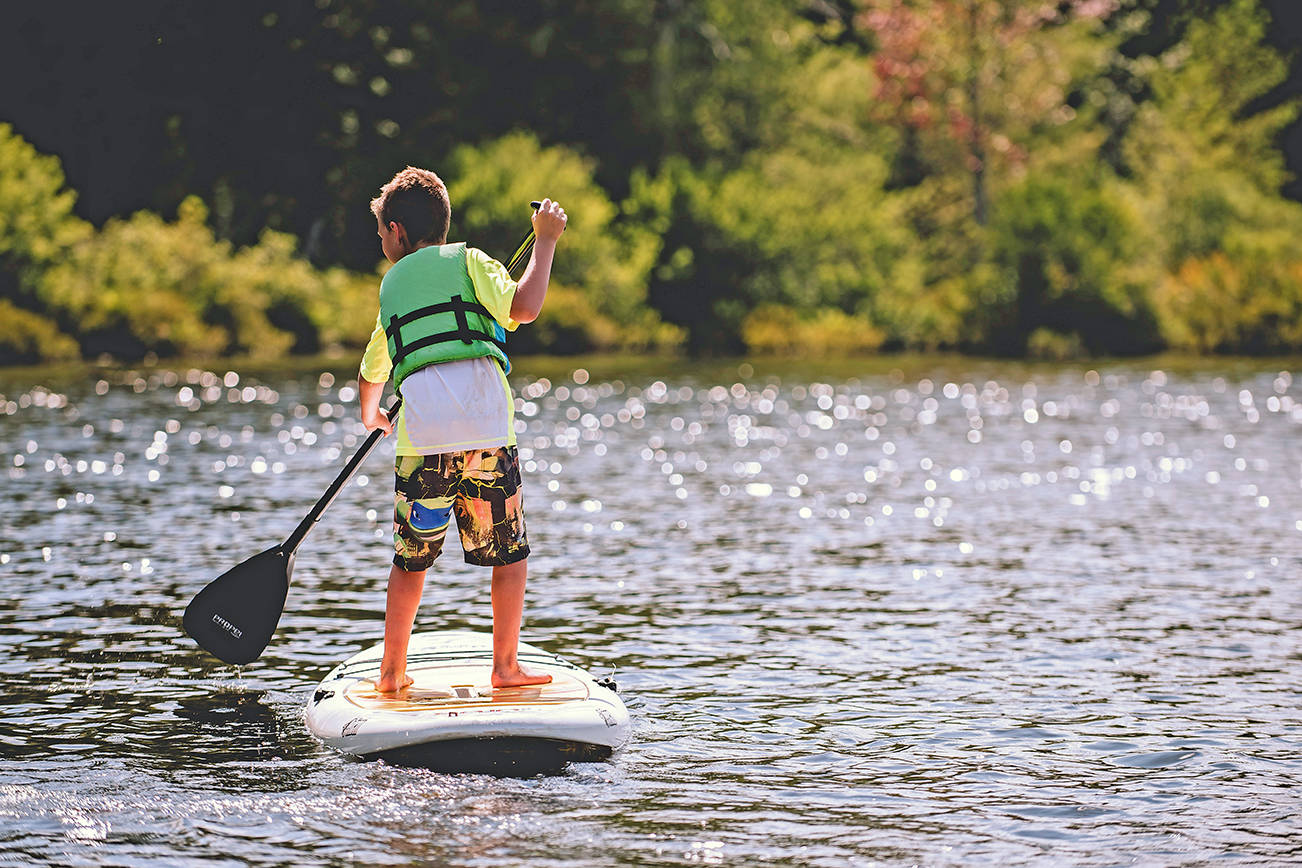Submitted by Washington State Parks.
The Washington State Parks Boating Program wants paddlers to have fun – and be safe – on the water. Paddle Safe Week runs from July 18 through July 24. The campaign encourages people to learn about safe paddling practices and how to put them to use on the water this summer and year-round.
“We encourage people to educate themselves and to always carry proper gear,” said Rob Sendak, Boating Program manager. “Education helps paddlers develop sharp decision-making skills that could save their life or that of a friend or loved one.”
For the fourth year in a row, Gov. Jay Inslee has issued a proclamation declaring July 18-24 Paddle Safe Week.
Why is paddlesport safety so important?
According to national and state recreational boating accident data, paddlecraft are at a higher risk of capsizing and swamping than motorized boats.
Since 2012, close to half of all boating fatalities in Washington state involved paddlecraft.
Last year, 15 out of 28 fatal boating accidents in Washington state involved paddlecraft.
The leading cause of paddling deaths is drowning. In many cases, victims were not wearing life jackets.
Here are the top 10 safety tips recommended by the Boating Program:
Get educated
All paddlers are responsible for knowing laws and keeping themselves and others safe. At a minimum, people should take a course to learn about paddlesport safety, emergency procedures and navigational rules.
Learn how to self-rescue
Paddlecraft are typically safe, but paddlers are at a higher risk of going overboard than operators and passengers in motorized watercraft. Capsize puts paddlers in danger of cold-water immersion shock, loss of gear and other life-threating situations. Paddle experts recommend learning self-rescue techniques. The Boating Program recommends starting with an instructor and hands-on training. Some self-rescues techniques are not easy, and they all require practice.
Always wear a life jacket
State law requires all vessels, including canoes, kayaks and stand-up paddleboards, to have at least one properly fitted Coast Guard-approved life jacket for each person onboard. Children age 12 and younger are always required to wear a life jacket.
File a float plan
Paddlers are encouraged to study their route in advance. Before going out on the water, even for a brief time, paddlers should always share their plan with a friend or loved one.
Carry essential gear
Paddlers should carry essentials for safety, emergency communications and comfort. State law requires paddlers to carry a sound-producing device, such as a whistle – even on a stand-up paddleboard. Safety equipment varies. Paddlers should research options and choose appropriately for their activity.
Avoid alcohol and drugs
Operating any vessel while under the influence of alcohol or drugs, including marijuana, is not only unsafe—it’s illegal. Washington state’s Boating Under the Influence (BUI) law applies to all boats including kayaks, canoes, stand-up paddleboards, rowboats and inflatable fishing rafts.
Check and understand the weather
Paddlers should check the weather frequently before and during their trip. When evaluating conditions and forecasts, paddlers should check warnings, weather conditions, wind and wave forecasts, tides and river flows.
Protect against cold-water shock
Falling into water under 60 degrees is dangerous, and many of Washington’s waters —including lakes and rivers — remain below 60 degrees, even during hot weather. Cold-water shock — not hypothermia — occurs in the first stage of immersion and poses a significant threat. Paddlers should avoid cotton and wear synthetic materials when a wet or dry suit is not available. Be prepared and wear a life jacket.
Be visible to other boaters
People should paddle to be seen by wearing bright neon colors that contrast with their surroundings. Highly reflective tape on paddles, a flagpole and a bright light will alert bigger boats to the presence of paddlecraft.
Always wear a leash
Stand-up paddlers must wear a leash. Staying tethered to a paddleboard provides extra flotation and minimizes the risk of being separated from the board. Many types of leashes are available (coiled, hybrid, straight, quick release). Different leashes are appropriate for different waterways. Paddlers need to research which leash is right for them.
Follow social media
Paddlers can participate in Paddle Safe Week through social media by using the hashtags #PaddleSafeWeek, #PaddleSmart, #PaddleSafe, #PaddleSober, #PaddlePrepared, #PaddleToBeSeen
About the Washington State Boating Program
The Washington State Parks and Recreation Commission administers the state’s Boating Program, which provides leadership in boating safety and environmental education and outreach. The goal of the program is to reduce accidents and fatalities, increase stewardship of Washington waterways, and keep recreational boating a safe, accessible and enjoyable pastime. For more information on the Boating Program, visit www.parks.wa.gov/boating.




